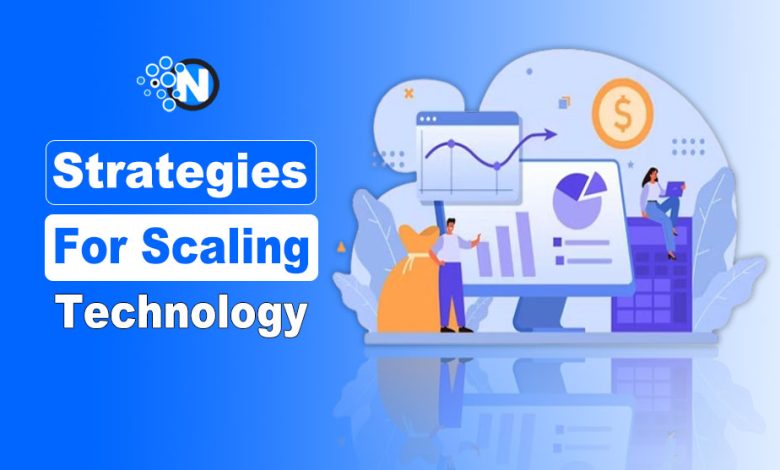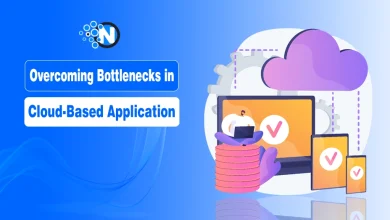4 Strategies for Scaling Technology with Business Growth

Growth is typically a key objective for many business owners, though the definition of growth may vary from person to person. However, growth often presents challenges related to scalability. As a business expands, the volume of operations increases, necessitating the development of more efficient and effective work processes and workflows that surpass the capabilities of existing technology. Businesses must have a technology infrastructure that is flexible enough to change without causing any problems.
In a tech-focused business environment, scalability has become essential, and having the right technology infrastructure is essential to sustainability and long-term success. Technology drives competitive advantage, operational agility, and customer experiences. In order to adapt to changing market conditions and future needs, your technology should be able to develop and change with your company.
The following are some essential tactics to make sure your technology grows with your company: using data-driven insights, adopting automation and digital transformation, and equipping your staff with scalable solutions. Businesses can position themselves for long-term success in a world that prioritizes digital by understanding and implementing these practices.
Let’s go through it!
Employees: The Heart of Your Technology Scalability Efforts
Your employees are at the center of your technology scalability efforts. They are the ones who will utilize, manage, maintain, and adopt any technological infrastructure you put in place. Their expertise in business technology determines whether the business runs smoothly or not. You’ll need their feedback and insights to adapt and refine tech solutions to meet the company’s unique needs.
Therefore, it’s essential to involve employees in any technological changes and take their feedback into consideration. Ensuring they are motivated to do their best is crucial, and this can be achieved through various means. For instance, you could offer fair compensation, give awards (whether produced in-house or obtained from professionals like (Edco trophies), encourage work-life balance, flexible working options, and more.
Happy and engaged employees are more productive and receptive to changes, especially when leaders and supervisors take the time to explain how such changes are critical to the running of the business.

Data-Driven Decisions and Scalable Infrastructure
When it comes to scalability, decisions about what and how much to invest need to be backed by data. There’s no room for assumptions. You need to put a lot of thought into the type of solutions to invest in. Business intelligence (BI) tools like Google Data Studio or Sisense can be used for analytics and insights into business operations. Using BI tools allows you to identify bottlenecks and optimize resource allocation.
Scalable infrastructure is key to having technology that can handle increased demand without compromising performance. Examples include Cloud Solutions, Content Delivery Networks (CDNs), Scalable Databases, Customer Relationship Management (CRM) Systems, and so on.
Cloud solutions offer scalable storage and processing power that can adjust to your business needs. Scalable Databases like Google Cloud Spanner and Microsoft SQL Azure can handle increasing amounts of data and user queries without compromising performance. CRM systems are designed to support growth and scalability as they can handle increasing customer interactions and data.
Implement Automation
Every industry has repetitive and tedious tasks that are time-consuming yet crucial to the operations of the company. Successfully scaling a business requires identifying and automating these repetitive tasks.
Automating such tasks can boost productivity by allowing employees to focus on more important duties. Automation also brings speed and precision beyond human capabilities, leading to faster turnarounds with minimal errors.
From data entry to chatbots, virtual assistants, payroll management, and recruitment, there are several ways to utilize automation to streamline processes. The tasks you automate will depend on your specific needs and objectives.
Go Digital
Most of the strategies discussed above—automation and scalable infrastructure—can only be achieved with digital processes. If your business is still reliant on paperwork, transitioning to digital processes is essential for smooth scaling.
Going digital will require an initial investment in technology, software, and training. You may also need to train employees on how to use new digital tools and workflows and convert existing paper documents to digital formats.
However, the benefits of going digital make the effort worthwhile, as it effectively positions your business for growth, agility, and long-term success in an increasingly digital world.
Benefits of Scaling Technology With Business Growth
The benefits of scaling a business technology with its growth/needs are highlighted below:
- Increased efficiency and productivity.
- Cost-savings.
- Competitive advantage.
- Greater flexibility and adaptability.
- Better customer experience.
Final Thoughts
The business landscape becomes more digital every day. A scalable technology infrastructure is not optional. It’s essential for companies trying to satisfy both present and future customer demands. Adopting tech scalability guarantees that your company will continue to be competitive, flexible, and able to handle the challenges of a dynamic marketplace.




